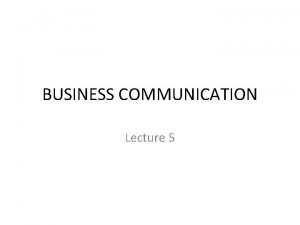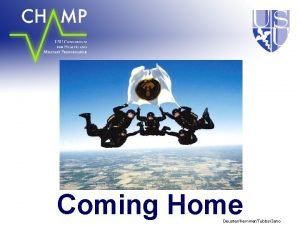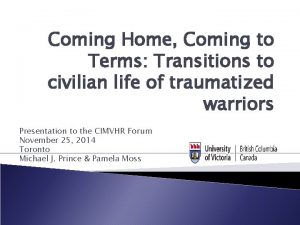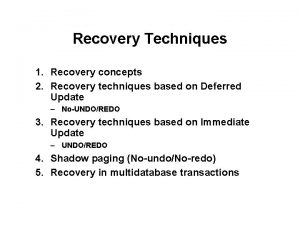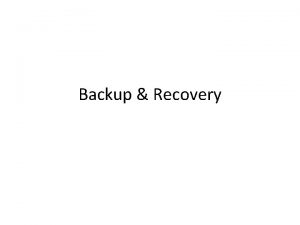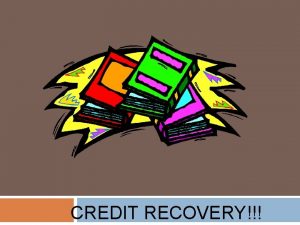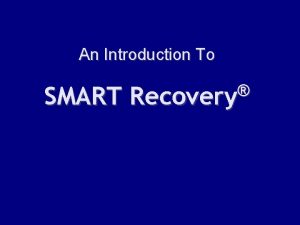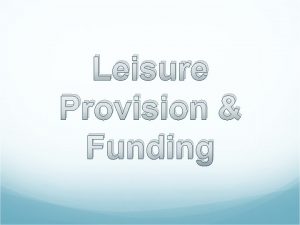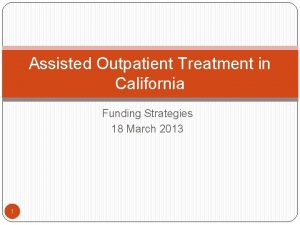Coming Home Recovery Treatment Funding Strategies for successful
















- Slides: 16

“Coming Home” Recovery, Treatment, & Funding Strategies for successful reintegration of incarcerated persons who have a Serious Mental Illness JUNE 1, 2013 PRESENTED BY ROSS C PETERSON VICE PRESIDENT, TELECARE CORPORATION

About Telecare 2 Headquartered in Alameda, CA Family, woman, employee-owned 80+ programs & 2, 500 employees in 8 states Specialize in services for people with SMI and SA, DD, CJ, involvement

Celebrating the Value of Partnerships 1965: • 1 program • 1 state • 1 county • 3 payers 1985: • 5 programs • 1 state • 3 counties • 5 payers 2013: • 80 programs • 8 states • 22+ counties • 40+ payers

Our Early Experiences Working with Forensic Consumers � 1998 Con Rep Solano subcontract Day Treatment � 2000 Psych Inpatient Alameda / Oakland County Jail �Oregon PSRB 16 bed Secure Residential � Woodburn (2006) � Bend (2010) � 2001 -2005 MIOCGA Solano Alameda

AB 34/2034 Homeless Outreach �These programs changed the face of California � Outcome driven ACT /FSP Model �Reduce homeless, ER, inpatient, in-jail days and return to prison rates �Include large number of Parolees and Probationers �Telecare provided services, LA, San Diego, San Mateo, Santa Barbara, Stanislaus and Ventura �Lead to Prop 63 and statewide Full Service Partnership approach. Has leveraged millions of dollars of FFP via County Specialty Mental Health Medi-Cal program

MHSA Funded Forensic Services �Prop 63 substantially expanded the system of care but did not include Parolees (viewed as a State responsibility) �MHSA does fund Court Collaborative and specialized FACT programs for Probationers �Telecare currently operates programs in Orange, San Diego and San Bernardino Counties

San Bernardino FACT April 2011 to April 2013 10000 9000 Homeless Days 8000 Acute Psych Days Jail Days 7000 6000 5000 4000 3000 2000 1000 0 12 Months Prior to Enrollment First 12 Months of Enrollment Most Recent 12 Months of Enrollment

Criminogenic Risk & Need Factors �Static (can’t be changed) Age History of Antisocial Behavior �Dynamic ( can change behaviors, attitudes, choices) Criminal personality (anti-social behavior) Antisocial attitudes, values and beliefs Antisocial associates (criminal peers) Poor self control and problem solving skills Substance Abuse Dysfunctional family (marital and family relations) Employment and Employment Skills

Recovery Center Clinical System(RCCS): Culture, Conversations

California Prison and Parole Populations � In 2009 California had 167, 832 persons in State Prisons and 111, 202 on parole � Persons with mental illness are disproportionately represented: 4 to 8 times higher than in general population As high as almost 20% of prison population � Higher rates of parolee violations Some studies have shown as high as 95% (dual dx) 70% to 80% with serious mental illness compared 50 to 60% for persons with criminal behaviors. �Parolee expanded services through the development of Integrated Services for Mentally Ill Parolees

Integrated Services for Mentally Ill Parolees (ISMIP) �Telecare was awarded 4 of these 8 pilot programs: San Diego County San Bernardino County Two in LA County �Other programs include: Kern County Sacramento County San Francisco County Santa Clara County

Telecare CORE Programs Los Angeles, San Bernardino San Diego Corrections Outpatient Recovery Enhancements (CORE) Multidisciplinary Team (ACT) approach Integrated services Team approach Low client-staff ratios Locus of contact in the community Medication management (Medi-Cal) Focus on everyday problems in living

The ISIMP Challenges � Identifying eligible parolee � Medi-Cal and SSI benefits � Housing Options / Homelessness � Access to Health Care � Access to Medications � Need for pre-employment and vocational services � High levels of co-occurring substance abuse � Lack of access to Specialty Mental Health Funding

Recommendations Allow CDCR to contract with CAMHSA as a Specialty Mental Health Provider for ISMIP services or via the Counties 1. It is estimated 30% -40% current cost of services for Medi-Cal eligible consumers could be funded via FFP With proposed expansion of ISMIP from its current 400 to 5, 000 members this could save millions of State General Fund dollars

Recommendations (Continued) 2. Allow smaller Parolee specialized case loads for consumers with serious mental illness. 3. Begin Benefit Application process as soon as allowable while persons are still in Prison. 4. Where “injectables” are clinically indicated begin process while still in Prison.

Recommendations (Continued) 5. Promote Evidence-Based Practices and Programs * �Assertive Community Treatment �Integrated Mental Health and Substance Abuse �Supported Employment �Supported Housing �Cognitive Behavioral Treatment * (Checklist of SAMSHA Gains Center for Behavioral Health and Justice Transformation)
 Strategies for successful interpersonal communication
Strategies for successful interpersonal communication Successful job search strategies
Successful job search strategies Bruce dawe homecoming
Bruce dawe homecoming Coming home mary irwin
Coming home mary irwin Coming home meditation
Coming home meditation Neural recovery
Neural recovery Math strategies for parents to use at home
Math strategies for parents to use at home Reading strategies for parents to use at home
Reading strategies for parents to use at home Lagi
Lagi Perbedaan home care dan home visit
Perbedaan home care dan home visit Homes for sale in roebuck sc
Homes for sale in roebuck sc Plurals of flower
Plurals of flower Come home come home jesus is calling
Come home come home jesus is calling New mobile home sales oak springs mobile home community
New mobile home sales oak springs mobile home community Let's go to your house
Let's go to your house Jr rabbin imam pretre
Jr rabbin imam pretre She said that, home economics stands for the ideal home.
She said that, home economics stands for the ideal home.
